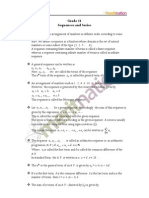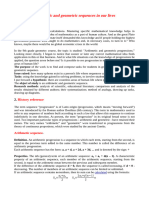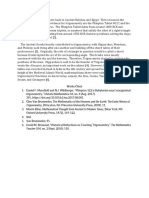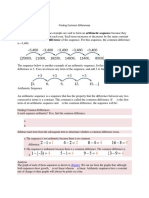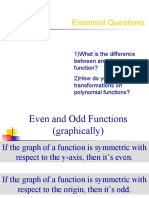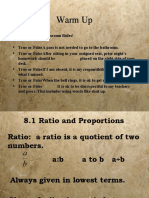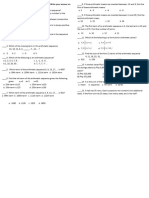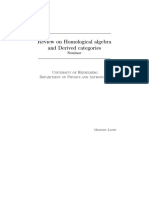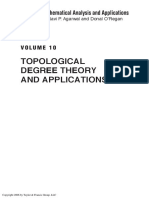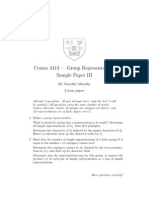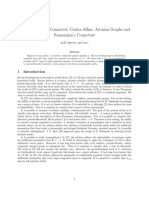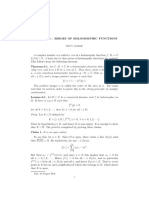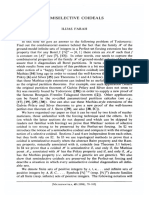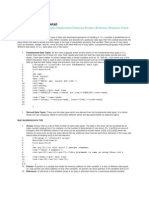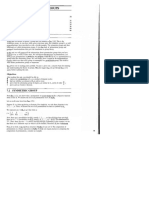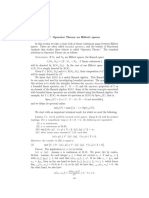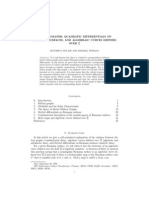0% found this document useful (0 votes)
153 views2 pagesWhat Is Arithmetic Sequence, What Is Geometric Sequence
An arithmetic sequence is a sequence where each term after the first is calculated by adding a constant value, called the common difference, to the preceding term. A geometric sequence is a sequence where each term after the first is calculated by multiplying the preceding term by a constant value, called the common ratio. An arithmetic geometric sequence is a sequence formed by the product of the terms of an arithmetic sequence and a geometric sequence. The sum of an infinite arithmetic geometric sequence can be calculated when the common ratio is between -1 and 1. The geometric mean of two positive numbers a and b is the square root of their product, or √ab, and represents the number that when used to form a geometric progression with a and b, yields a
Uploaded by
Ana May BanielCopyright
© © All Rights Reserved
We take content rights seriously. If you suspect this is your content, claim it here.
Available Formats
Download as PDF, TXT or read online on Scribd
0% found this document useful (0 votes)
153 views2 pagesWhat Is Arithmetic Sequence, What Is Geometric Sequence
An arithmetic sequence is a sequence where each term after the first is calculated by adding a constant value, called the common difference, to the preceding term. A geometric sequence is a sequence where each term after the first is calculated by multiplying the preceding term by a constant value, called the common ratio. An arithmetic geometric sequence is a sequence formed by the product of the terms of an arithmetic sequence and a geometric sequence. The sum of an infinite arithmetic geometric sequence can be calculated when the common ratio is between -1 and 1. The geometric mean of two positive numbers a and b is the square root of their product, or √ab, and represents the number that when used to form a geometric progression with a and b, yields a
Uploaded by
Ana May BanielCopyright
© © All Rights Reserved
We take content rights seriously. If you suspect this is your content, claim it here.
Available Formats
Download as PDF, TXT or read online on Scribd
/ 2































